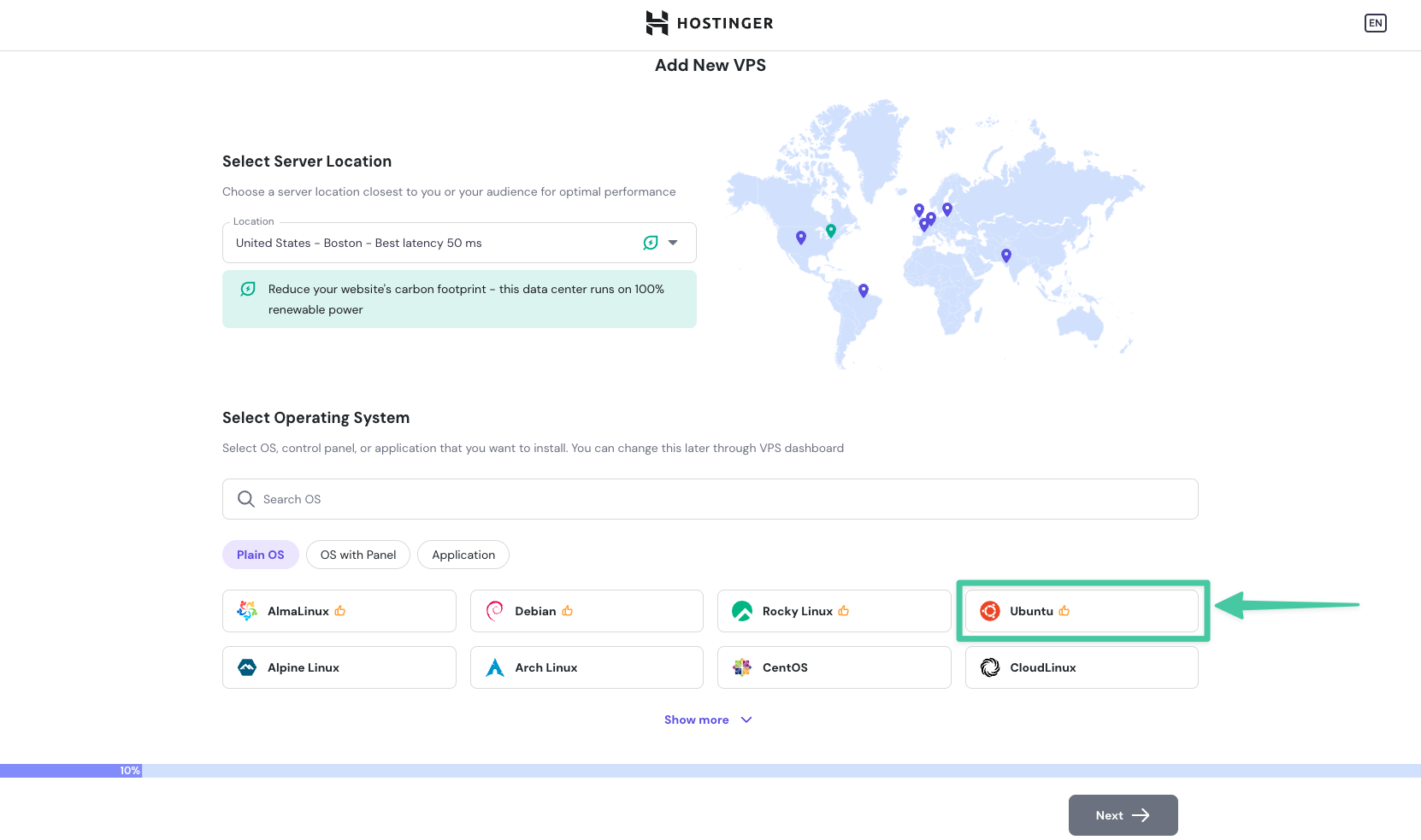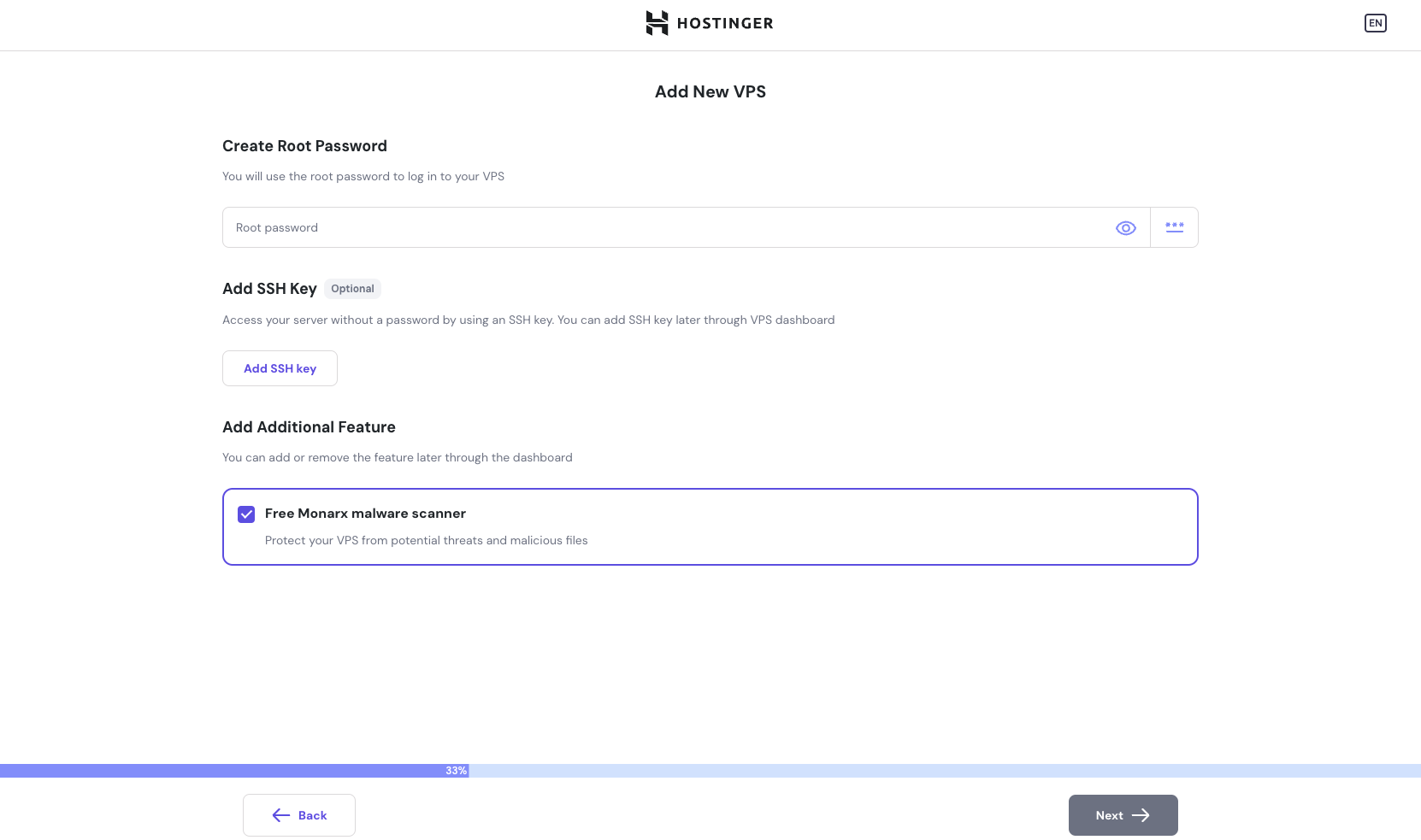Next.jshostinger
Creating a Hostinger VPS for Next.js
By Taylor Segell

- Published on

Sharing
Provisioning a VPS on Hostinger: A Step-by-Step Guide
Before deploying your Next.js application, you'll need to provision (create and set up) a VPS on Hostinger. Here's how to do that:
1. Log In to Your Hostinger Account
- Go to the Hostinger website and log in to your account.
2. Navigate to the VPS Section
- Find the "VPS" or "Servers" section in your Hostinger dashboard. It's usually under "Hosting" or "Services."
3. Select a Server Location & Operating System
- Hostinger offers a list of server locations. Choose the location that is closest to your target audience. For example, if your audience is primarily in the United States, choose a server located there.
- You'll be prompted to select an operating system (OS) for your VPS.
- For this guide, we recommend choosing Ubuntu 22.04 or Ubuntu 24.04 (or the latest version). Ubuntu is a stable and well-supported Linux distribution, making it a good choice for both beginners and experienced users.
- Other Linux options, such as CentOS and Debian, are also acceptable, but this guide focuses on Ubuntu.

4. Add Security Information
- Create a memorable root password and make sure you save that for later or you will not be able to access your server
- Add an SSH key, this is will be crucial when it comes to those of you all who will be using a private git repository.

5. Choose a VPS Plan
Hostinger offers several VPS plans with different specifications. Here’s a breakdown to help you choose:
| Plan | Price | CPU | RAM | Storage | Bandwidth | Best For | Link |
|---|---|---|---|---|---|---|---|
| KVM 1 | $5.49 | 1 vCPU | 4 GB | 50 GB | 4 TB | Very simple sites with very low traffic | KVM 1 |
| KVM 2 | $7.49 | 2 vCPUs | 8 GB | 100 GB | 8 TB | Low to mid-range traffic, and applications with moderate complexity | KVM 2 |
| KVM 4 | $11.99 | 4 vCPUs | 16 GB | 200 GB | 16 TB | Mid to high traffic websites, more complex applications | KVM 4 |
| KVM 8 | $24.99 | 8 vCPUs | 32 GB | 400 GB | 32 TB | Enterprise-scale websites, high-performance applications | KVM 8 |
Recommendation: If you are unsure, start with the KVM 2 plan, which is the most popular and usually offers sufficient resources for most sites. You can always upgrade later as your site grows.

7. Review and Purchase
- Review your selected plan, operating system, server location, and any additional options.
- Complete the purchase.
8. Access Your VPS Details
- Return to the homepage of hostinger and from there select the VPS tab in the left sidebar
- From there you will click on the Manage button on the right to access your server's information.

- After your VPS is provisioned, you'll receive an email containing the following information:
- IP Address: The public IP address of your VPS, needed to connect via SSH and point your domain.
- Username: The user name for your VPS (usually
root). - Password: The password for your VPS.
- Hostname: The hostname of your VPS.
- Keep this information safe as it will be required to interact with your server.
Choosing the Right VPS Tier
When selecting the appropriate VPS plan on Hostinger, consider these factors:
- Application Complexity: Simple, static sites (personal blogs, portfolios) work well on entry-level tiers. More complex apps or sites with heavy traffic will need mid or higher-tier plans.
- Expected Traffic: Websites with a lot of users, especially in short bursts, require more RAM and CPU. Insufficient resources could lead to performance issues.
- Budget: Choose a plan within your budget. You can always scale up later if needed.
- Future Growth: Ensure you select a plan that supports potential growth and resource demands over time.
Recommendation:
- For simple Next.js blogs or portfolios: KVM 2 is usually sufficient.
- For more complex applications: Consider KVM 4.
- For high-traffic or enterprise applications: Go for KVM 8.
By selecting the right VPS plan, you’ll ensure that your application runs smoothly. Let me know if you have any more questions!